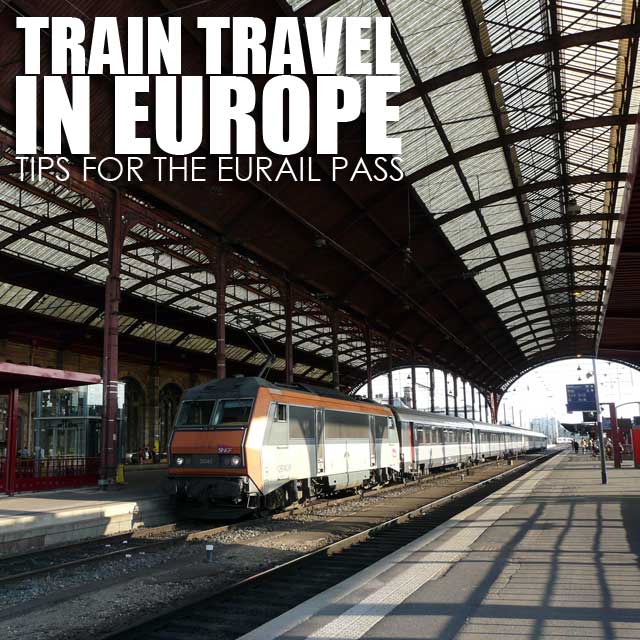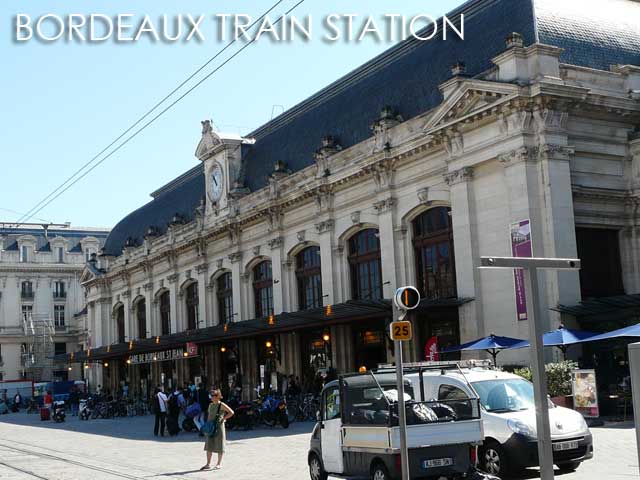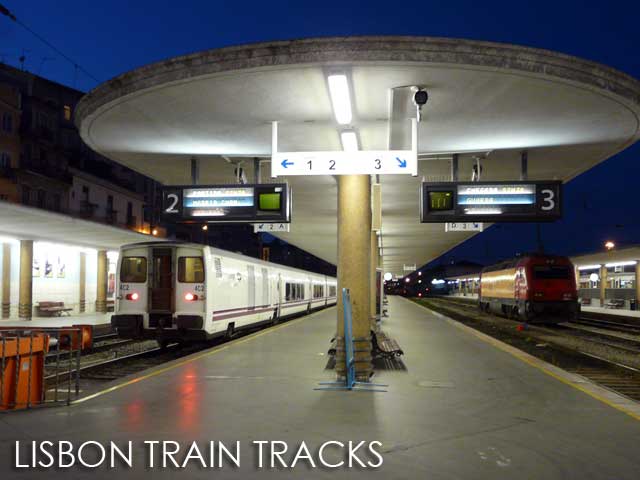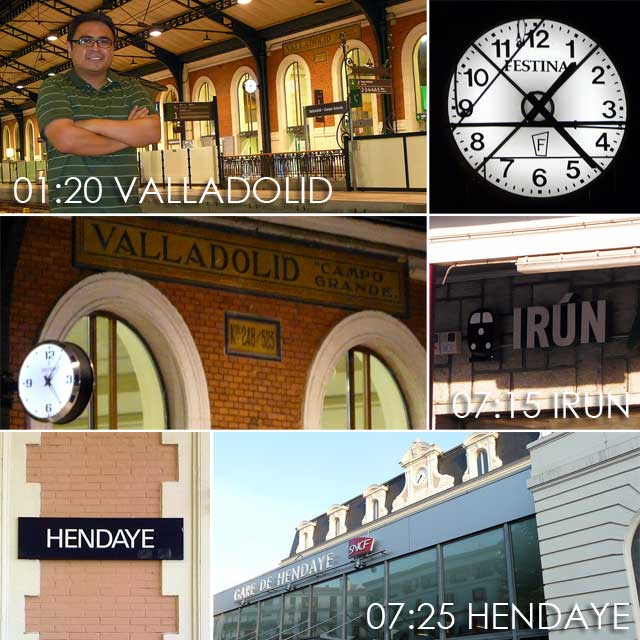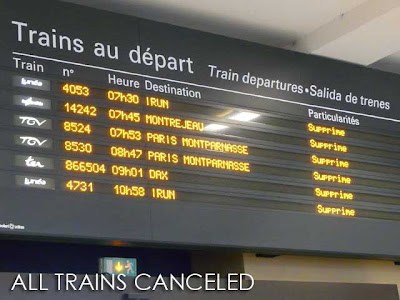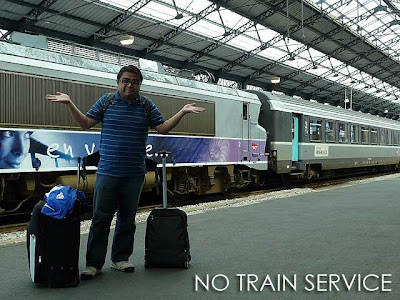
Driving around Europe was not part of my plans. I had purchased a
Eurail Pass in the Philippines before flying to Europe. It had worked quite well
when I used it last year. But we met a dead end while trying to get seat allocations out of Paris due to a strike. Exasperated from trying so many options but to no avail, we decided to ditch our passes and see if renting a car was a viable option. The building beside Gare de Lyon had various brands of car rentals which gave us an opportunity to shop. We ended up taking out a car from Europcar, spending €760 for two weeks and unlimited mileage.
1. Make sure you have a valid driver's license and credit card
These are very important when renting a car. The Philippine driver's license simply says
NON-PROFESSIONAL and does not say anywhere that it is a driver's license (LTO should do something about that). So I spent some time showing some details in the card to prove it was a driver's license. A credit card is also required since if you damage the car, return it with the gas tank not full, or you get a ticket while driving around, the car rental company will simply charge it to your card.
2. Check for promotions and inclusions such as unlimited mileage and insurance
This actually made the difference. We were checking with the different companies for their two week rates. They were mostly the same, but gave us only 3,500 kilometers of mileage. Their unlimited mileage packages were about €300 more. We ended up getting Europcar, since for the same price as others, they gave us unlimited mileage. We ended up driving close to 6,000 kilometers. Asking for promotions can save you a lot of money.
3. GPS and detailed road maps are non-negotiable
We regret not having any GPS with us. I would like to believe that my sense of direction is already quite good. And yet we got lost several times, missing the turns and exits and going around in circles in city centers because of the confusing signs. Although we got ourselves a really detailed Europe road map. There were still times we would miss exits. And when that happens, we had to backtrack. And that is a waste of gas and time.
On our way from Zurich to Paris, we ended up driving through old towns and villages since we were about fifty kilometers off track. And to back track, we had to take minor roads back to the main road. It would have been a nice view if it wasn't dark. But it was an experience to talk about nonetheless.
Detailed maps of city centers were not included in the book we got. So at times we ended up in wild goose chases, guessing which direction to go. So when driving around Europe, GPS is very important. Next time we go for a drive through Europe's highways and city centers, we will make sure we have one.
In the absence of GPS,
Google Maps and
Michelin provide detailed directions. But when you're on the road, it's hard to get it printed out and you might end up copying it all by hand.
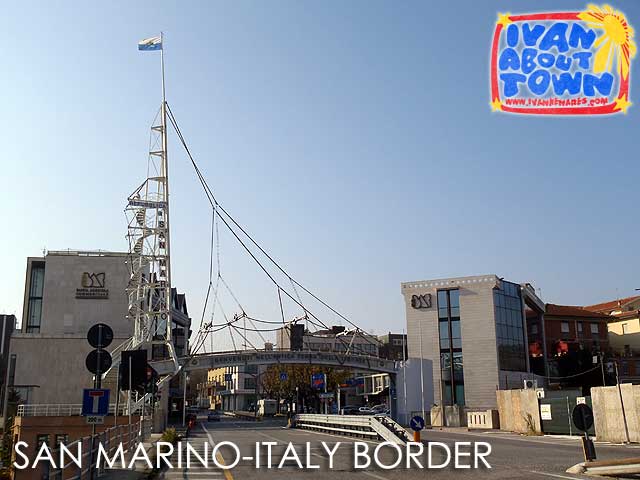 4. Mind the numbers
4. Mind the numbers
Highways and roads are known by numbers such as A1 or E15. And so are exits. So mind the numbers! Make sure you are following the right road number. Sometimes, following the destination instead of the road numbers will lead you away from your planned route.
While driving from Vienna to Prague, we knew that the highway we were to take was going to pass by Brno. But when we reached a fork, we saw signs pointing to both Prague and Brno, when we should have focused on the numbers on the signs. We should have taken the road to Brno which was the main highway and the faster route to Prague. Because we followed the signs to Prague, it took us through minor roads and the drive ended up 30 minutes longer.
5. Make sure to follow traffic signs and lines
Don't bring your bad driving habits to Europe! It could get you a ticket. Avoid swerving and entering one-way streets. Follow traffic lights. And stop when a pedestrian is crossing. Make sure you follow arrows and directional signs because they will warn you when an exit or fork is near. We missed exits simply because we were not on the right lane. That's why GPS or detailed directions are important because it will warn you when to move towards the left or right.
6. Watch out for speed limits
Even if other cars seem to be breaking the speed limits, it's no reason for you to do as well. Maybe they can well afford the speeding fines. GPS devices usually warn you of coming speeding cameras. But it's best to keep within speed limits. Some highways go as high as 130 kph. The common speed limit for major highways is 110 kph. Others could go down to 90 or 70 kph. Again, you might end up with a speeding ticket fine in your credit card bill if a camera catches a violation on your rented car.
 7. Note toll fees and vignettes
7. Note toll fees and vignettes
Germany is the only country we passed through that does not charge toll fees (although I've been reading it requires emission stickers for green zones in some cities). Others have toll gates or barriers. All the while, we though toll was free in Switzerland. Until we got fined for it. It turns out, there are toll stickers or vignettes which are required on your windshield when passing through toll roads. We were just parked at a gas station five kilometers from the Italian border (the police usually check at gas stations) when we were spotted. We got fined 100 Swiss francs (approximately €90) and had to buy the vignette for another 40 francs which was ironic because five kilometers away was Italy. But it was good it happened to us there because it turns out, fines in other countries are bigger.
We almost got fined €150 in Slovenia. And at a gas station in the Czech Republic, a policeman was checking our windshield for the vignette. Good thing we knew better and got them at the last gas stations before entering the country. They are also available at the border. All in all, we had six vignettes (five stickers on our windshield and one e-matrica). Vignettes are also known as matrica or vinjeta and are used in Austria, Bulgaria, Czech Republic, Hungary, Montenegro, Romania, Slovakia, Slovenia and Switzerland. Always remember, when you cross a border, it's a different country with different rules.
 8. Fill up with gas when you have the chance
8. Fill up with gas when you have the chance
Although gas stations are conveniently located along highways, you're always not sure if you'll get to one when you need one. As a practice, we made sure our tank was full all the time. And we'd gas up as soon as we've consumed half the tank. We made sure that it would not go below one fourth since we didn't want to run out of gas in the middle of nowhere.
And since we were travelling quite often at night, we also took advantage of the gas stops to take cat naps when I got really sleepy. It definitely helps.
9. Avoid driving during winter
It need not be said that driving through snow is unknown terrain for a lot of us. It's difficult for locals, much more for us. Even if it wasn't snowing, driving through fog was quite a problem for us, especially at night.
10. Music is a good driving companion
What we would do when we enter a country is to buy CDs of the local music, especially folk or country music, if there was some available in gas stations. It added color to our otherwise long and boring drives. And set the mood as we drove through a country. Those traditional beer songs definitely kept us awake and in high spirits!
 11. Park properly and look for those meters
11. Park properly and look for those meters
Looking for parking areas can be a challenge. In some cities, it wasn't difficult since directions to parking garages were clearly marked (a white letter "P" on blue background seems to be used throughout Europe). For street parking, you have to check if the parking area is public or restricted, metered or sticker, and if there are time limits.
For metered street parking and in some garages, note that you have to pay for your parking beforehand. Look for the nearest meter and pay the required amount depending on how long you think you will stay. You will get a printed ticket with the expiry time which you have to display on your dashboard. Make sure it can be seen since parking attendants regularly check and will fine or tow cars without tickets or which have exceeded the expiry time. So don't scrimp on time since you don't want to be rushing back before your time expires.
12. Keep your composure when driving
Accidents usually happen when you panic. So always keep your composure when driving. If you have to stop for coffee or to take a nap, you should. It's better to be safe than sorry.
Driving around Europe was indeed an unforgettable experience! It's more tiring than taking the train since you won't get to sleep or rest during the trip, plus travel time is much longer since trains move faster. But you get to enjoy the scenery plus drive through small villages or stop in cities along the way. Plus you follow your own schedule. You can leave when you want and adjust your plans accordingly. Despite the stress involved, we definitely want to do it again. Thanks to my fraternity brod Ted Patulan for joining me around Europe on this trip!
















